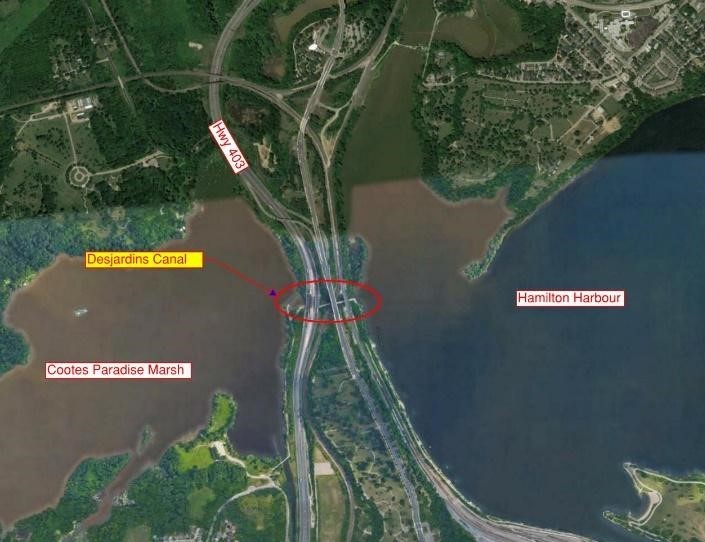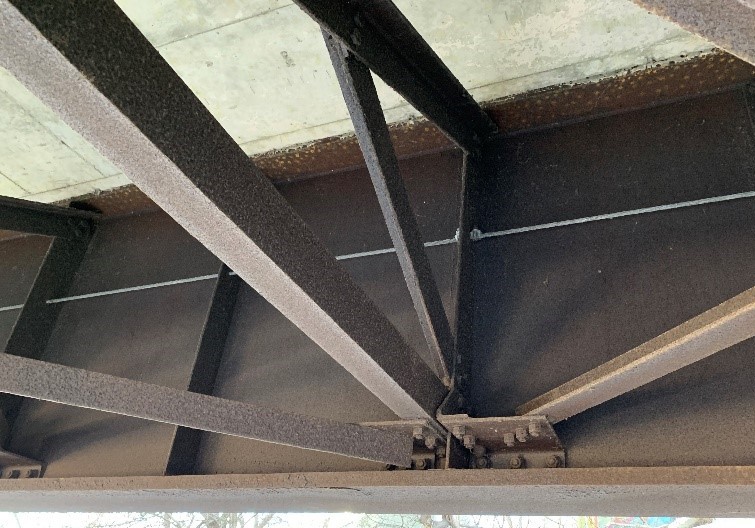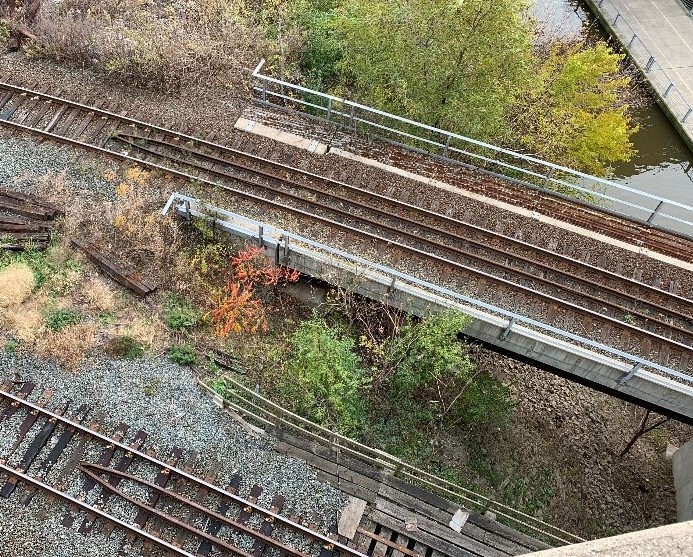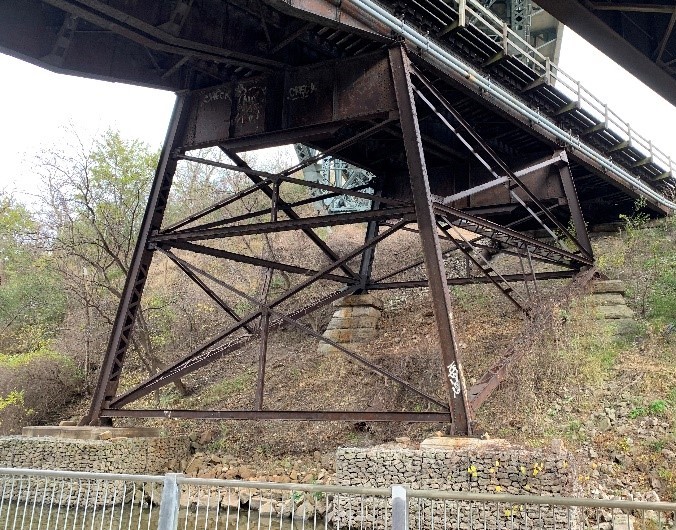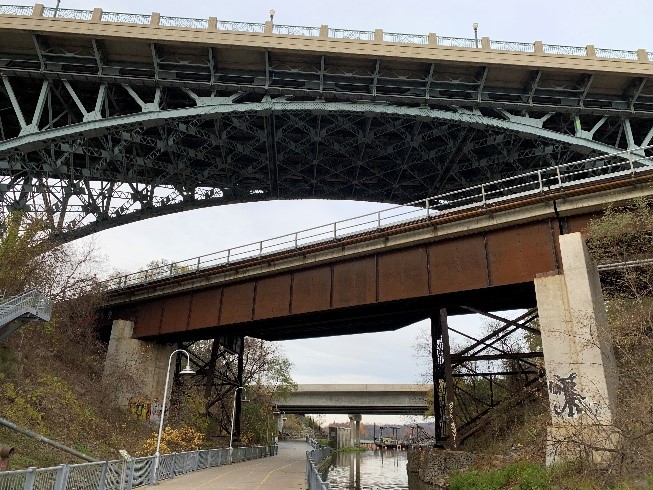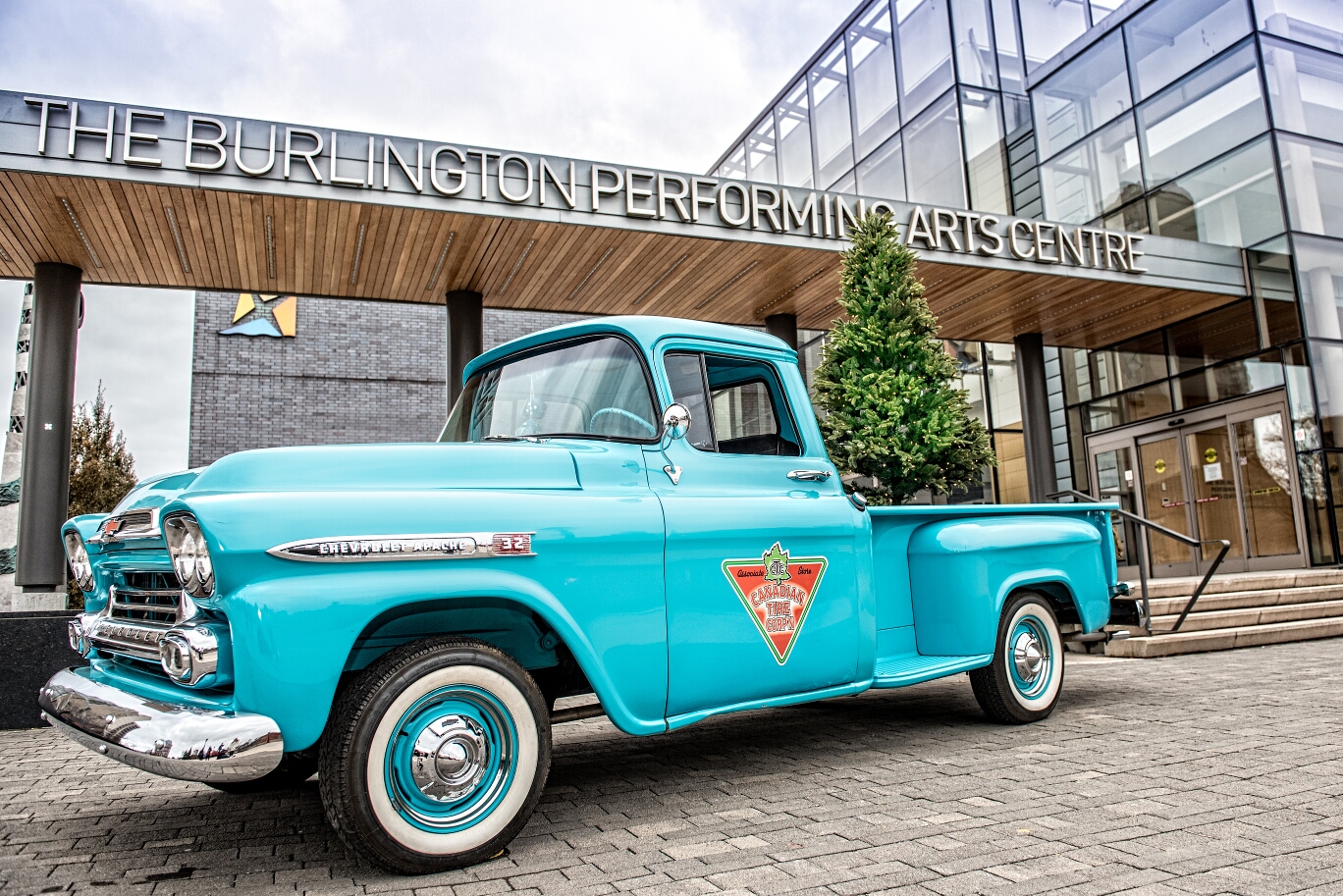I can’t say it enough. From a civil engineering perspective, the Desjardins Canal in Hamilton has an absolutely fascinating collection of bridges carrying freight trains, highway traffic, GO transit, local traffic, pedestrians…seven bridges span the canal today, not to mention the nine other bridges over this same canal that have since been removed or replaced over time, or the floating pedestrian bridge sitting in the water, or the fishway spanning to the west! This is the greatest concentration and diversity of bridges anywhere! See Figure 1.
There’s so much engineering going on along this canal, which is why I’ve written about its bridges many times in the past. There’s no shortage of material!
Here are links to my previous How Things Work articles on the Desjardins Canal bridges:
How Things Work: Desjardins Canal Railroad Bridges (Part 1)
How Things Work: Desjardins Canal High Level Bridge
How Things Work: The Desjardins Canal — Marine Shipping Channel Retired
Two of these amazing bridges carry Canadian National and Canadian Pacific Rail tracks from the Burlington mainline into Hamilton to the CPR Aberdeen Train Yard, which oddly terminates on a bridge over Highway 403. There was a time when these tracks continued west up the escarpment, but it is now mostly a long bike trail, which appears to be the natural evolution of a decommissioned railroad line. Another spur continues the rail eastwards up the escarpment towards Buffalo, New York.
One of these two bridges was built in 1897, carrying two tracks over the canal while at the same time passing under the previous High Level Bridge, which has long since been replaced. Right next to it, the other was built in the 1990s or 2000s to increase capacity over the canal (see Figure 2).
The juxtaposition of old bridges vs. new is also something to admire, showing the evolution of engineering design and construction. Both are great examples of plate girder bridges — meaning their spans (carrying the tracks over the canal) are comprised of deep girders made of steel plates rivetted together. Forging big steel plates was brand new technology in the 1890s that the railroads capitalized on first. A century later, the newer bridge is also built with plate girders — welded together this time, rivets having been phased out of bridge construction many decades prior (see Figure 3).

The similarities between these two bridges end there. Between the plate girders underneath the bridge deck are the diaphragms — the cross-bracing the connects the girders, making them function together to spread the load from the trains uniformly throughout the bridge so that all the members work together. In 1897, the old diaphragms were made of dozens of small plates rivetted together, similar to the piers (vertical structure holding up the deck), whereas the new bridge has a more efficient system of slender angles locking the girders together (see Figure 4).
And the decks that carry the rails are also very different (see Figure 5). While the old bridge carries only the bare rails and ties, the new bridge has a full concrete deck, allowing the ballasted section to continue uniformly across the bridge, resulting in a lower-maintenance configuration.
Figure 5: To keep the deck weight as low as possible, the rail ties on the old bridge sit directly on the girders and on two intermediate support beams. In fact, there’s hardly a deck at all (left). Notice that it’s actually two independent bridges. The newer bridge (right) has deeper girders (higher capacity) to carry a full concrete deck covered with ballast and ties and rails.
When the rails transition from sitting on ballasted ties (ties embedded in golf-ball- to baseball-sized rock) to crossing a bridge, they often have plates or curbs to help keep the ballast in place and the bridge clean. These transitions are prone to maintenance problems — the more parts you have, the more pieces you have to maintain. Newer railroad bridges are designed like concrete bathtubs, where the ballast continues uninterrupted across the bridge. The rails and ties don’t even notice the difference (see Figure 5 above and Figure 6).
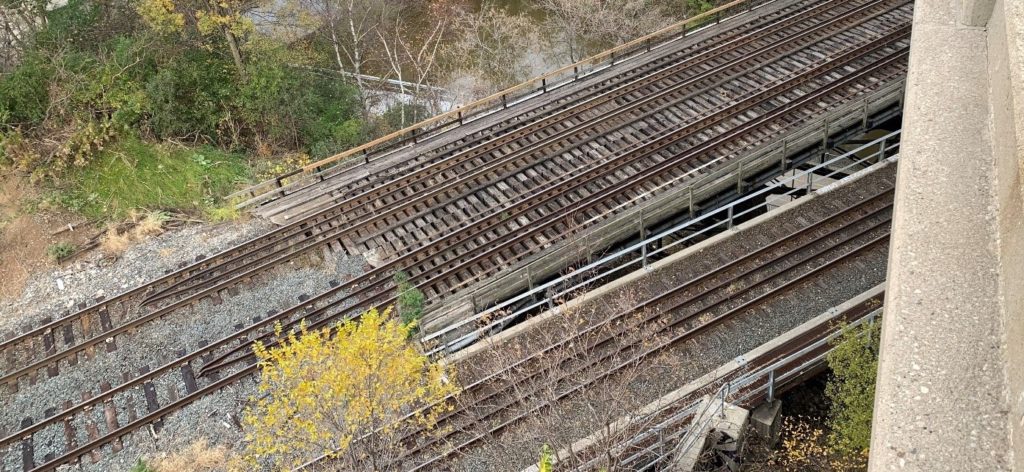
Guardrails (the rails inside the rails) are installed across bridges between the live rails to prevent a train from damaging the bridge (or falling off the bridge) in the event of a mild derailment. They are made of the same steel section that the regular rails are made of and are also nailed to the ties the same way starting from just outside the bridge abutment. If a train derails, the guardrails will keep the train upright within the ties and ballast (see Figure 7).
The old piers are a complex geometry of fabricated columns and braces, rivetted together and supported by heavy stone foundations. They haven’t been painted in a long time, which is amazing considering their age and that it’s almost all the original steel. Somehow it has avoided severe corrosion (since 1897!), which is usually the nemesis of these beautiful steel structures. The new bridge of course has solid concrete piers (see Figure 8) most likely sitting on caisson foundations — deep drilled concrete piers usually reaching down to solid rock.
Regardless of the angle through which (or the era from which) you look at this fascinating group of bridges, the view is amazing. As you walk or bike or paddle down the canal, be sure to look up, enjoy the scenery, and be safe.

Sources:
Historic Bridges.org. Desjardins Canal Railway Bridge. Url: https://historicbridges.org/bridges/browser/?bridgebrowser=ontario/desjardinscanalrail/ (accessed Feb. 6, 2022).
Hamilton Public Library. Local History and Archives. Desjardins Canal Disaster. Url: https://lha.hpl.ca/articles/desjardins-canal-disaster (accessed Feb. 6, 2022).
For more information on the author: https://www.linkedin.com/in/eric-chiasson-10601082


